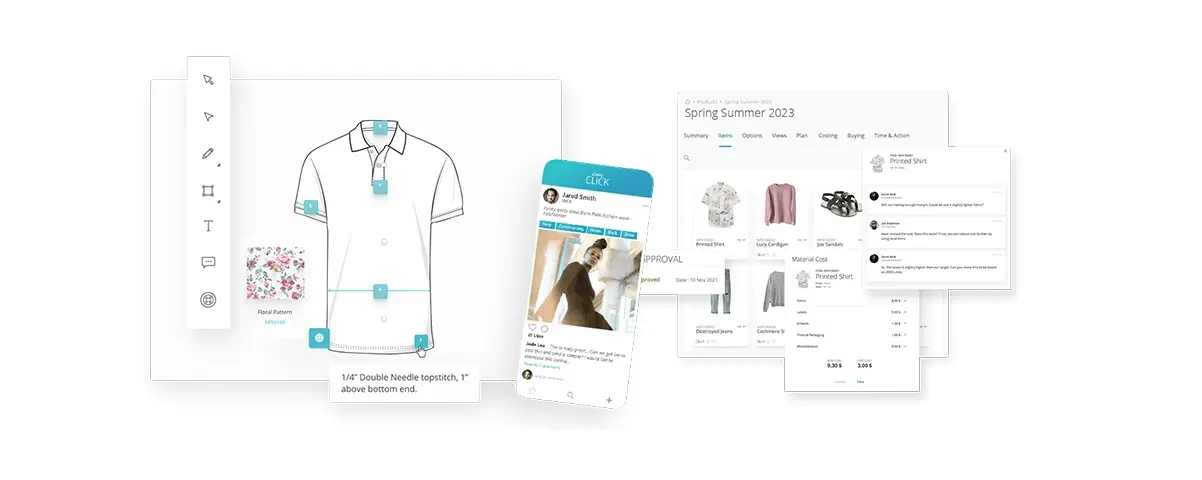How to get the most out of a PLM software tool when you’re just getting started
-
Introduction
Product Life Cycle Management (PLM) software serves as a pivotal tool to foster seamless collaboration among team members while maintaining laser sharp focus on the big picture. A well-suited PLM solution empowers your team to develop the right products that meet your clients’ needs and expectations.
But if you’ve never used PLM software before, how do you ensure you’re doing it right? Fret not, as the learning curve for these tools is anticipated! Follow these expert tips from our PLM implementation team to avoid falling into the rut of using new software tools in old ways—yielding only marginal benefits, if any!
-
Best PLM Strategy to Get the Most ROI From PLM Software
Strategic planning during the transitional phase is key to success with PLMs. Harness the true benefits of product management software with our beginner’s guide:
Pro Tip #1: Start with Fundamentals, Add Advanced Features in Phase 2
Embracing PLM software for novices might seem overwhelming, but remember, familiarity will come with time! Begin by employing the tool for the most fundamental tasks that will save you the most time—such as developing Tech Packs or managing samples.
There’s no hard-and-fast rule about when you should use one tool over another, so assess your needs, immediacy, and then work accordingly. As you grow more comfortable, delve into other features as per your specific needs. Let the learning curve guide your progression.
Pro Tip #2: Mastering Data Filters and Content Views
Once you’ve acclimated to the basics, it’s time to explore the software’s product data management and sorting features. Play around with all the categories, views and fields given in the product information cards.
You can even get more organized by creating new fields and filters that will help you manage your product data in the future. Mastery of navigation through diverse views and filters equips you to locate desired information swiftly and efficiently.
Pro Tip #3: Centralize Bill of Material (BOM) management
A critical and time-consuming task that is best delegated to PLM is the development and management Bill of Materials (BOM). Abandon Excel spreadsheets and switch to the centralized BOM modules of your PLM as quickly as you can. In most cases, it’s literally as easy as a drag and drop to get started!
A centralized BOM tool on a Cloud PLM solution makes it easy for different teams to contribute, manage, and access up-to-date product data from a unified platform.
Pro Tip #4: Streamline Sample Revisions & Approvals
Managing the different rounds of sample revisions is arguably one of the most tedious and communication-heavy parts of the product development lifecycle. PLM tools are excellent for streamlining this process, making it more efficient and error free.
PLM software facilitates requesting samples for review, providing feedback to the right team or manufacturer, and granting approvals on the same platform. A traceable log of changes ensures transparency, while easy access for the factory expedites execution. With direct access, vendors can study requests and make changes without combing through ending email trails.
Pro Tip #5: Start Building a Resource Library
Discover the utility of PLM in organizing and tracking products, materials, mood boards, sketches and so on. Dedicate time to constructing a centralized resource library encompassing materials, trims, and other components.
Develop a searchable apparel product library for all your collections so your team can search for what they need in dedicated catalogs. This will help you manage core, new and seasonal carryover products in a single, visually organized place. No more line reviews on complicated spreadsheets!
-
Conclusion
To get the most out of your PLM software, try to implement the best user practices from day one. Invest in ample training and support so that PLM adoption is easy and seamless for all users.
While expectations should be realistic during the transition from an old system to a new one, embrace gradual change where maximum returns on investment are anticipated. Preparing objectives in alignment with your needs and goals will foster a smooth implementation process.
Most of all, work with a PLM vendor with implementation experience in businesses like yours. This minimizes the risk of implementation failure. If you run a fashion or consumer product brand, WFX Cloud PLM is the best in the game.
Sign up for a PLM demo to find out more!








